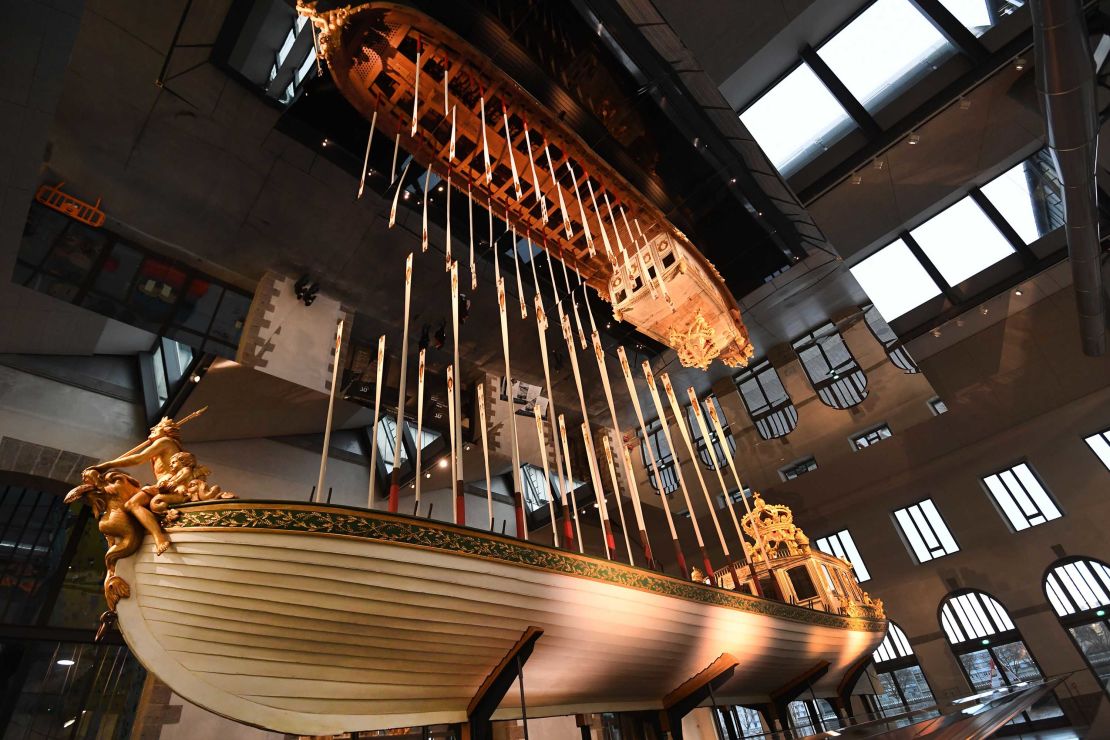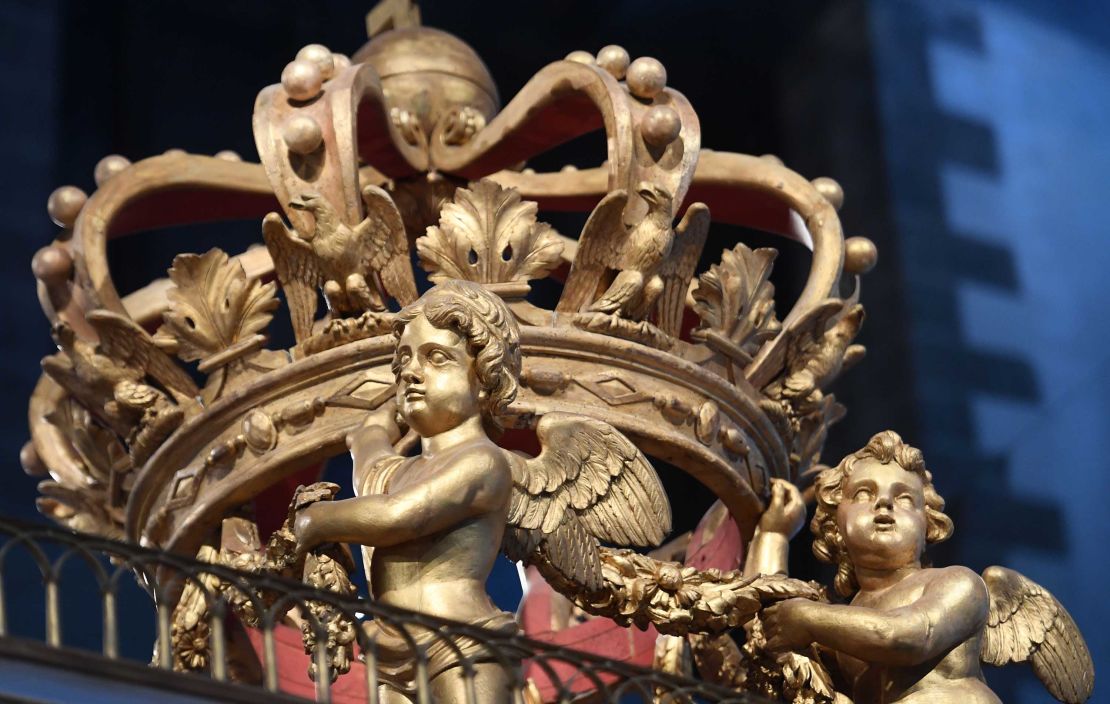A spectacular imperial barge built for Napoleon Bonaparte has been unveiled at the Naval Museum in Brest, France, following a restoration project.
Ten specialist restorers worked on the vessel, which was constructed in 1810, for two months prior to the opening of the new display on Friday, according to a press release from the museum.
Visitors can appreciate the 62-foot barge from all angles, thanks to glass bays underneath and a mirror that hangs over the top.
Napoleon Bonaparte, also known as Napoleon I, declared himself France’s emperor in 1804 and made a lasting impact on the country as a military leader and emperor, waging wars against many of the European powers of the time.

He ordered the secretive construction of the imperial barge in spring 1810, and it was first used to ferry him around during a visit to the French naval fleet at Antwerp later that year.
The original barge, which had fairly muted decorative elements including an eagle on the prow, was kept in Brest from 1814 onward.
The more elaborate elements we see today – a figure of Neptune on the prow, figures at the bow carrying imperial weapons, and the large gold crown supported by four angels on the roof – were added in 1858 prior to a visit from Napoleon III and Empress Eugenie.

In 1943, the barge was moved from Brest to Paris under the protection of the occupying German forces to form part of the new Navy Museum. However, after an eight-day train journey, it was discovered that the doors of its new home, the Palais de Chaillot, were too small to fit the barge.
It took two years to make a large gap in the wall of the building, and the barge was finally installed in August 1945.
In 2018, the barge was returned to Brest when the Paris museum closed for renovation.
Jean-Yves Besselièvre, manager of the Naval Museum in Brest, said the barge is one of the museum’s “treasures” and the only vessel of its kind preserved in France.
The restoration is special because the barge wasn’t built to last a long time, he said.
“There is in fact a certain fragility to the object, but it has been perfectly managed by the restorers… and by the hauliers,” said Besselièvre.
